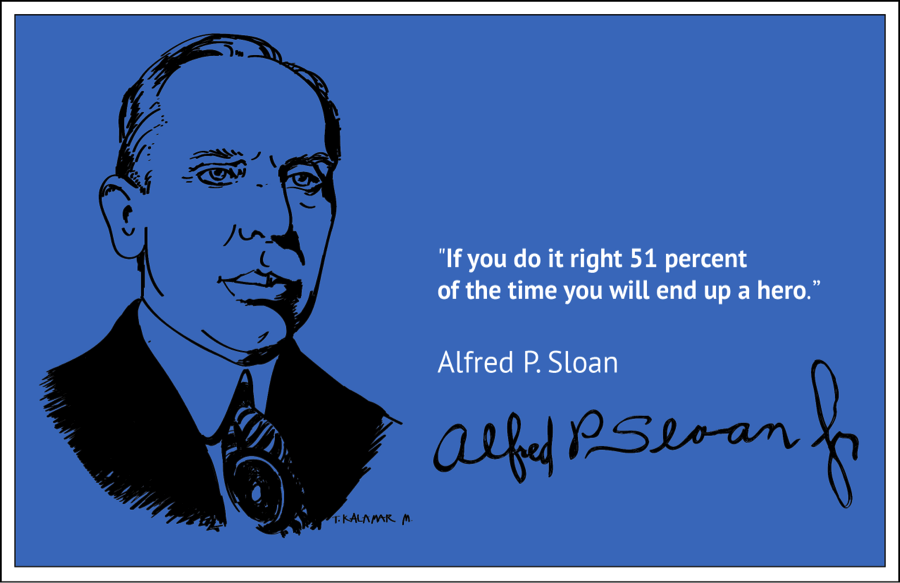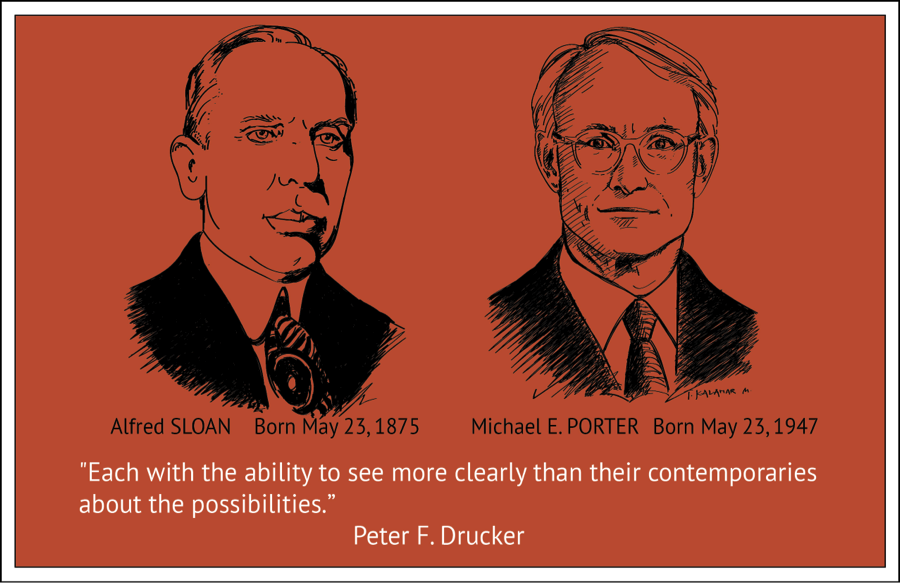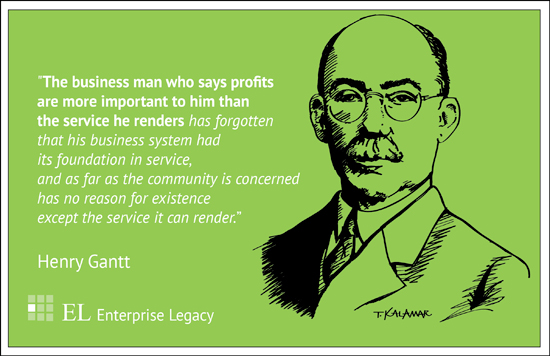Today is a good day to recall the thoughts of Alfred P. Sloan (born May 23, 1875), who spent three decades making General Motors the largest corporation in the world. Sloan brought together disparate companies supplying and building automobiles to create a whole — the first industrial cluster.
Sloan reflected on those times: “when we started on this great adventure in the early 1900s the whole automotive industry was searching for ways and means to find itself. . . The number of sales by dealers was unknown. The number of cars held by dealers was unknown. Trends in consumer demand were unknown… There were no statistics on the different cars’ market penetration; no one kept track of registrations…”
As Peter F. Drucker put it, “The times were ripe for a man who could think imaginatively about the great corporate entities that were being created. . . and Sloan was the man.”
Sloan’s words about flexibility and adaptability are worth considering now, 138 years after his birth:
My generation had an opportunity unique in the history of American industry. When we started in business, the automobile was a new product, and the large-scale corporation was a new type of business organization. We knew that the product had a great potential, but I can hardly say that any of us, at the beginning, realized the extent to which the automobile would transform the United States and the world, reshape the entire economy, call new industries into being, and alter the pace and style of everyday life.
. . . It was our task to find out what forms of organization were suitable to our company. This meant, above all, an organization that could adapt to great changes in the market. Any rigidity by an automobile manufacturer, no matter how large or how well established, is severely penalized . . .
There have been and always will be many opportunities to fail in the automobile industry. The circumstances of the ever-changing market and ever-changing product are capable of breaking any business organization if that organization is unprepared for change.
. . . To meet the challenge of the market place, we must recognize changes in customer needs and desires far enough ahead to have the right products in the right places at the right time and in the right quantity.
In describing the General Motors organization I hope I have not left an impression that I think it is a finished product. No company ever stops changing. Change will come for better or worse. I also hope I have not left an impression that the organization runs itself automatically. An organization does not make decisions; its function is to provide a framework, based upon established criteria, within which decisions can be fashioned in an orderly manner.
The task of management is not to apply a formula but to decide issues on a case-by-case basis. No fixed, inflexible rule can ever be substituted for the exercise of sound business judgment in the decision making process.
Each new generation must meet changes- in the automotive market…in a changing world. For the present management, the work is only beginning. Some of their problems are similar to those I met in my time; some are problems I never dreamed of. The work of creating goes on.


